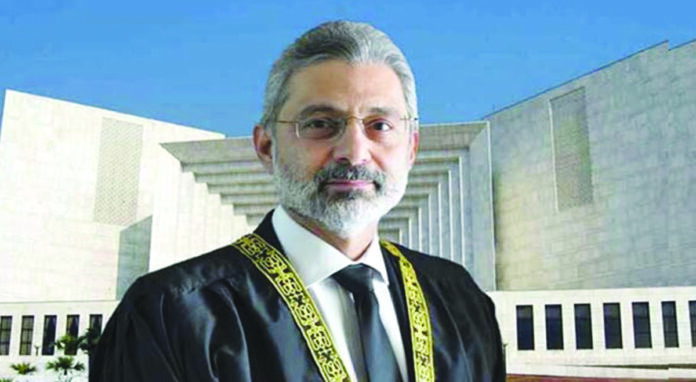When Mr Justice Qazi Faez Isa took oath of office as Chief Justice of Pakistan, the legal fraternity and the public at large were hopeful of a new era of transparency and accessibility within the Supreme Court of Pakistan.
In a groundbreaking decision, the Supreme Court initiated live streaming of hearings for petitions challenging the (controversial) Supreme Court Practice and Procedure Act of 2023. On the surface, this move appeared to be a step towards greater openness and accountability. When I first heard about this unprecedented move, I was in favour just like everyone else because if you have a debate on whether you want cameras in courtroom, you can make a number of important points by taking the affirmative position, and it’s not an unreasonable position; but the longer I saw the live transmission of the court proceedings, the less good idea I thought it was.
The proponents of live streaming argue that it would serve as a valuable tool for educating the general public about the inner workings of the court. While the intent behind this reasoning is commendable, the actual outcome has been far from ideal. Rather than providing a comprehensive view of the institution, iIt gave a false simpression of the Supreme Court because it is not all the time that the Court is deciding “whether there should be a right to appeal or not.” Most of the time, at least 99 percent of the time, the Court deals with the real law and no doubt it will be very helpful in getting people familiar with how the court operates, but it is also essential to acknowledge that the primary duty of the court is not to educate the public about its proceedings. The court’s fundamenta,l role, as mandated by the Constitution, is to interpret and uphold the law according to the principles of justice and the rule of law.
One of the most glaring consequences of introducing cameras into the courtroom was the potential alteration in the behaviour of those involved in the legal process. I think, because there were cameras, the lawyers acted differently and most importantly the judges acted differently, that would ultimately affect the decision process as well. Many senior members of the bar agreed that in the live streaming proceeding, lawyers were being grilled unnecessarily which supports the argument of a possible change in the behaviour of judges by a change in their questioning style or interaction with the counsel which has the potential of compromising the independence of judiciary.
People have absolutely the right to know what judges are doing in the court, but not at the risk of hurting the process of justice. There can be a lot of steps to make the court more accessible like providing transcripts which is a common practice in many jurisdictions.
The potential for altered behaviour of judges today and possibly lawyers tomorrow, make live streaming an imperfect solution for achieving transparency and accountability. Rather than rushing into live streaming, a more considered approach should be taken that would strike a balance between transparency and the preservation of the integrity of the legal process.
Justice Kennedy of the United States Supreme Court once voiced his concerns about televised proceedings by stating, “I would have the instinct that one of my colleagues asked a question because we are on television.”
This sentiment underscores the apprehension that judges may become conscious of their public image and modify their behaviour accordingly. Such alterations in judicial conduct risk overshadowing the pursuit of justice itself. In the live streaming of Supreme Court hearings, it was evident that judges often interrupted counsels and delivered lengthy lectures on their own interpretations of the law. These interventions, at times, resembled a judge’s advocacy for a particular viewpoint rather than impartial adjudication which has undermined the public trust rather than enhancing it. This observation is crucial which has arisen in the presence of cameras because the ultimate casualty is the pursuit of justice within the legal process.
So what could be the alternatives? A more effective approach to increasing transparency and accessibility in the legal system would be to provide comprehensive transcripts of court proceedings. Many jurisdictions worldwide have adopted this practice, which allows the public to access the full record of hearings without distorting the proceedings themselves. It is also important to mention other jurisdictions like the USA where the practice of live streaming has been in place in various states and judges have expressed concerns about its impact on the legal process. Justice Kennedy’s apprehension about colleagues asking questions for the sake of the camera’s presence highlights a universal concern among judges. This change in questioning style may not necessarily lead to a more just decision-making process.
While the idea of live streaming court proceedings is appealing in its aspiration to promote transparency and public understanding, the primary duty of the Court is to uphold the Constitution and the rule of law, and the introduction of cameras has the potential to compromise this mission. The potential for altered behaviour of judges today and possibly lawyers tomorrow, make live streaming an imperfect solution for achieving transparency and accountability. Rather than rushing into live streaming, a more considered approach should be taken that would strike a balance between transparency and the preservation of the integrity of the legal process.






















